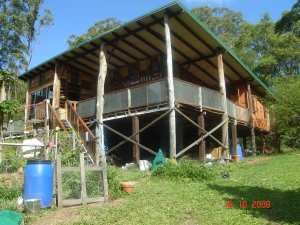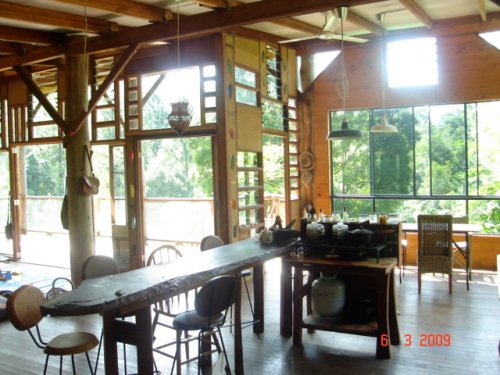Living in Northern NSW we get our share of floods that are declared a natural disaster. Having experienced at least 3 major floods and witnessing the effect of power loss and storm damage to thousands of homes, we now realise that our choice of home and lifestyle have many benefits.
Living in a pole home allows for great advantages in times of flood. Directly before torrential rain, during and after, there is a tendency for deadly funnel web spiders washed out of their burrows, scorpions, snakes etc to want to move into people’s dry dwellings. Being off the ground in our pole home we have never experienced this inconvenience and potentially dangerous problem. A major reason for structural damage and household losses in flood times is from the rising flood waters, however in our pole home any unusually wild water or flood water flows safely under the house. We have found that as the ground below the house swells from water saturation our pole home compensates for this movement with the poles moving slightly up and down thus avoiding structural damage. We have found that if a pole does rise slightly due to the swelling earth it will gently subside once the ground dries.
At present as I write this article we are in the grip of another major flooding disaster and thousands of homes have been without mains electricity for over 3 days leading to great inconvenience, loss of refrigeration, cooking appliances, internet connections, hot water etc. These people have to wait for services to be reconnected and rely on the utility companies. On the other hand we have stand alone solar power and have been able to maintain our usual lifestyle with only minimal budgeting of power usage. Even with a week of rain there has still been at times enough UV to maintain our battery charge. Within this week we have switched on the generator once to help boost the battery charge to do a load of clothes washing. A time period of about 45 minutes.
During these times of great wet we light our fire place, which has a water jacket in the back so we are heating our water and at the same time keeping our home warm and dry, free of any mould, whilst cooking on top of the fire place and in the wood fire oven below and drying our clothes around it.
So while many have their lives turned upside down with often great loss from these damaging weather conditions, we sit high,dry and warm in our energy efficient pole home.
We encourage the use of stand alone power for a simple, rewarding life.
For more information about our home check out our website: www.reducingthefootprint.com
 Where we live in Northern NSW it was very important for us to decide on a house design that was most adaptable to our local climate and topography. We chose to design a passive solar pole home.
Where we live in Northern NSW it was very important for us to decide on a house design that was most adaptable to our local climate and topography. We chose to design a passive solar pole home. One of the most effective ways to lower our energy bills and reduce our carbon footprint is to incorporate passive solar design into any new home.
One of the most effective ways to lower our energy bills and reduce our carbon footprint is to incorporate passive solar design into any new home.